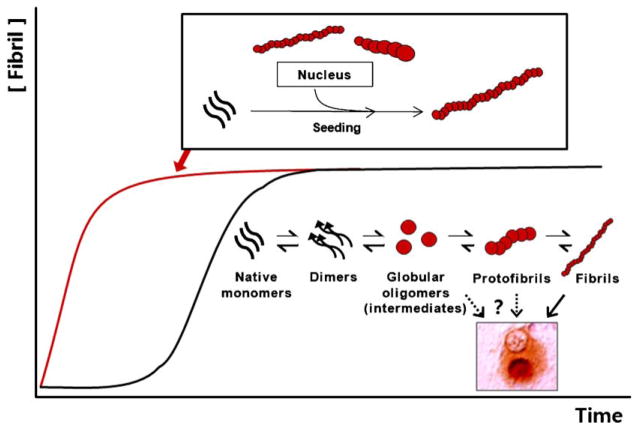Fig. 1.
Amyloidogenic protein aggregation process. Graph shows kinetics of amyloidogenesis. Black trace represents the general “uninduced” amyloidogenesis, while red trace represents the amyloidogenesis upon “seeding” with preformed aggregates. Process of amyloidogenesis involves several intermediate species, including dimmers, small oligomers, and protofibrils, some of which may have stability and conformational properties for serving as “nucleus” (scheme underneath the black trace). When preformed amyloids are present, these intermediate steps, hence the nucleation steps, are bypassed; monomers are directly recruited to amyloids (scheme above the red trace). Globular oligomers refer to broardly defined oligomeric aggregates, which may include both unstable “pre-nuclear” intermediates and relatively stable intermediates with the characteristics of nucleus. (For interpretation of the references to color in this figure legend, the reader is referred to the web version of the article.)

